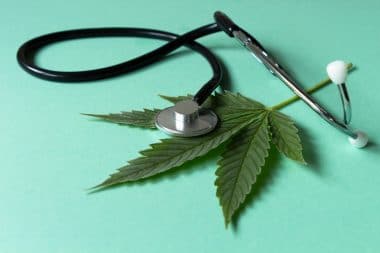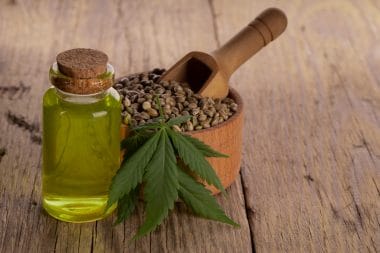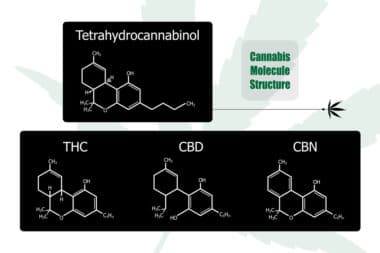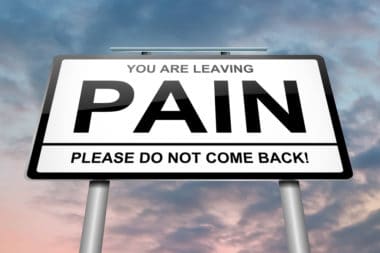Businesses dealing in CBD have been creeping up all over the place in the recent year or so. But what is it? CBD is an acronym for cannabidiol, a chemical compound that originates from the Cannabid Sativa plant.
Some people confuse CBD with marijuana, but in reality, the two chemicals are not quite the same thing. Though both CBD and THC (marijuana) come from the previously mentioned Cannabid plant and thus, have the same overall molecular structure, marijuana contains more tetrahydrocannabinol than THC. Unlike THC, CBD is not psychoactive, so it will not create that “high” that many people associate with marijuana.
Psychoactive chemicals such as THC act on the central nervous system, and as a result, affect the way the brain functions. This can lead to changes in behavior and mood as well as in perception and consciousness. On the other hand, CBD impacts mood and other behaviors, but not to the same degree.
How does CBD actually work?
Regardless of their chemical composition, both work with the receptors in your brain that release neurotransmitters. CBD, however, since it is not psychoactive, has a milder effect on those receptors and only binds to the CB1 receptors loosely.
Here are five specific ways that CBD affects the brain.
- Reduced blood flow
- Pain management and mitigation
- Reduction of oxidative damage
- Lowered degree of excitation in the brain
- Antipsychotic properties
So what does all of this mean? Basically, CBD can help with pain, memory, mood, and sleep. Specifically, CBD can stop the body from absorbing the pain compound called anandamide. With higher amounts of anandamide in the human blood system, the less pain that person might feel.
Further, cannabidiol is also associated with preventing inflammation within the brain and the human nervous system. This too can help reduce pain and can make it easier for someone to fall asleep.
Unfortunately, there is a lot of disagreement out there as to whether or not CBD actually does work. CBD effects can be inconsistent and vary from person to person. That said, CBD is one of the fastest-growing supplements around the world. More and more consumers are giving CBD a try to help manage various conditions such as migraines, confusion or brain fog, chronic pain, anxiety, depression, and overall pain management.
What are the Health Benefits of CBD?
Perhaps the best way to experience the positive effects of CBD is through CBD oil or CBD powder. The oil is made by extracting CBD directly from the cannabis plants, then diluting it with a base oil such as hemp seed oil or coconut oil. In this form, CBD can be used to provide a variety of health benefits.
The oil or powder from CBD is then mixed into skin creams and gels to run onto the skin or can be put into capsules for oral consumption. Some suppliers have even started making chewable CBD gummies. Certain cosmetics now also contain CBD, and waxing aestheticians even use CBD wax for hair removal on their clients.
How CBD is consumed really varies on what it is being used for, and therefore it is important that those who wish to use CBD as a treatment speak with their physician first.
- Anxiety relief — Many researchers believe that the use of CBD oil can alter the way your brain responds to serotonin. The result is reduced stress, lessened effects of anxiety, including the lessened risk of an increased heart rate, improved symptoms for those dealing with post-traumatic stress disorder (PTSD), and reduced insomnia.
- Protection of the neurological system — CBD may help lessen the risk of contracting or lessen the progression of neurological diseases or concerns such as multiple sclerosis (MS), Parkinson’s disease, Alzheimer’s, or stroke.
- Pain relief — CBD oil can help with the way your brain responds to pain. Cannabis is believed to relieve symptoms of MS pain, arthritis pain, chronic pain, muscle pain, and even spinal cord injuries.
- Lessened risk of seizures — CBD may help reduce the number of seizures experienced by those who have epilepsy.
- Treatment of cancer — CBD may help lessen the growth of cancer cells, and can also help to reduce the symptoms of cancer. For many, CBD’s use is believed to help make cancer treatment easier by lessening nausea and making chemotherapy more tolerable.
With the legalization of CBD as an ingredient in over-the-counter products in the US by the Food and Drug Administration, there has been a veritable explosion of products containing CBD in the past few years. That’s great news–you can take CBD any way that works for you–but it can also be overwhelming if you’ve never used CBD before and you’re not sure what to buy. These are the basic categories of CBD-containing products you can find on store shelves today, along with a short survey of the differences between each of them.
· Oil: Common And Convenient
One of the first products to hit the market, CBD oil is taken by squeezing a few drops below the tongue and allowing the capillary-rich tissue to carry the oil directly into the bloodstream. Oils work fast and maximize the amount of CBD delivered since they bypass metabolic processes in the digestive system and enter the bloodstream directly. On the other hand, some find the earthy taste of CBD oil objectionable. Since an entire bottle of CBD oil can be expensive, it’s worth trying CBD oil ahead of time before you go out and buy an entire tincture for yourself. If you’re sensitive to strong flavors, you may want to try a different product for your first time taking CBD.
· Edibles: Sweet and Simple
Because fats dissolve cannabinoids well, CBD edibles can take many forms. Gummies are one of the most common types of edible you can purchase since they keep well and can contain doses large enough to be therapeutic. The main downside of an edible product is that it takes longer for your body to metabolize the CBD, since it has to pass through your digestive system, and along the way, a portion of the CBD will be lost to those metabolic processes. While edibles take longer to affect the body and brain, it’s tough to beat them for convenience and ease of use, making them a great option if you’re new to CBD products.
· Pills: No Calories, No Problem
CBD capsules or pills have a lot in common with edible forms of CBD. The big difference is that while an edible dissolves the cannabidiol ahead of time in a lipid, a capsule simply delivers an amount of CBD directly into your digestion for your body to metabolize. Your body therefore metabolizes less of the CBD out of a capsule, making it slightly less efficient compared to an edible. On the other hand, CBD pills don’t have additional calories and can easily be taken anywhere. They’re still convenient and easy to use, making them another good choice for beginners.
· A Note On Edibles: Mind Your Dosage
For both pills and capsules, it’s important to keep in mind the relatively slow pace at which your body absorbs CBD from those products. A common mistake when first using these products is to take the recommended dosage first, then wait only half an hour or possibly even less before deciding it’s not having the desired effect and taking more. You should wait at least an hour, preferably two, before deciding to consume more of an edible CBD product when assessing its effects. Otherwise, you could find yourself much more drowsy than you bargained for, in addition to using up more of the product than you needed.
· Creams: For Local Relief
CBD creams have a specific use case, but they’re excellent at their job, which is to deliver a dose of CBD directly to the tissues of the skin. If you’ve found CBD therapeutic for your chronic pain, using a CBD cream will let you deliver the product right where you need it. Particularly if you find oral CBD makes you drowsy, a CBD cream will allow you to access the pain-relieving effects without making you excessively tired. On the other hand, a CBD cream will obviously do less for your anxiety than an oral product that enters the bloodstream and circulates throughout the brain and body.
· Others On The Way
The market for CBD is still expanding, which means new products are also becoming available practically every day. CBD beverages, such as teas and soft drinks, are in the pipeline at many beverage companies, while CBD concentrates are also entering the market in some jurisdictions. CBD beverages are another promising way to try CBD for the first time since like edibles they can be more pleasant to consume.
Whatever CBD product you try, remember to control your dosage at first until you know how you react to CBD. Use your dosage to produce desired effects; it’s common to take a little during the day to help with generalized anxiety, then take more at night as a sleep aid, for instance. Whatever your process, try a few things to help pick the product that’s right for you.








Reply